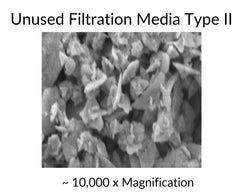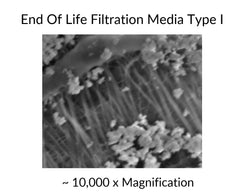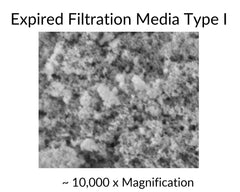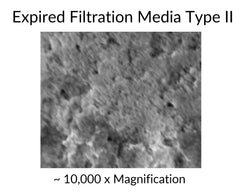Tech Talk: A Very Close Look at How Water Filters Work
RSS
Eric Roy, Ph.D. | Scientific Founder
It seems that there is some confusion about how water filtration works, and I think it is partially due to the use of the word “filter”. In this article, we try to clear up to the confusion with a Scanning Electron Microscope!
The word "filter" conjures up images of things like coffee filters or other things that catch particles, but a better way to think about water filtration media is as a 3-dimensional material that water flows through, a structure that better resembles a sponge. An even better way to think about filtration media within a system is as a stack of these individual sponge-like “stages”, where each stage removes a different contaminant, until it becomes saturated. Much like how a soaked sponge cannot mop up any more water, a saturated water filter stage doesn't "soak up" any chemicals that it was designed to remove. This is why it is critical that any water filter used in your home has enough capacity to filter out the chemicals that you are asking it to, and that you change the cartridges before they become saturated.
The concept of "saturating a filter" is best demonstrated using Scanning Electron Microscope (SEM) images of two different types of filtration media. These images were collected as part of a product life cycle failure test, where we intentionally pushed the filtration system beyond its useful life.
The concept of "saturating a filter" is best demonstrated using Scanning Electron Microscope (SEM) images of two different types of filtration media. These images were collected as part of a product life cycle failure test, where we intentionally pushed the filtration system beyond its useful life.


The first set of images show two types of pristine filtration media before it has processed any water. For Filtration Media Type I, the structure is 3 dimensional and web-like, while Media Type II has a high surface area granular structure. The two filtration media have different microstructures because they perform different jobs in the purification system.


The second set of images shows SEM scans for the same two filtration media types, near the end of the cartridge's useful life. For the Type I media, you can clearly see the particulate and colloidal contaminants trapped in the web-like structure, which is exactly how the stage is supposed to perform. In the image of Type II Media, the previously sharp and angular looking media has formed a visible layer of contaminant "fuzz" that it has pulled from the water. At this point in the filter's life cycle, the stages are approaching saturation, and it's time to get a new cartridge.


This final set of SEM images show what both media types look like once they've been used well beyond the useful lifetime. If a filter cartridge is fully saturated like this, it provides absolutely no protection against target contaminants. This is what happens when you don't replace your filter cartridge!
Pretty Neat Eh?
As always, feel free to leave water filter technology or water related questions/comments in the comments section, or send your thoughts to info@hydroviv.com.
Have a great day!
Other Great Articles From Water Smarts Magazine:
Tap Water Chlorination: The Good, The Bad, The Unknown
Fluoride in Municipal Tap Water: What You Need To Know
Disinfection Byproducts: What You Need To Know
Pretty Neat Eh?
As always, feel free to leave water filter technology or water related questions/comments in the comments section, or send your thoughts to info@hydroviv.com.
Have a great day!
Other Great Articles From Water Smarts Magazine:
Tap Water Chlorination: The Good, The Bad, The Unknown
Fluoride in Municipal Tap Water: What You Need To Know
Disinfection Byproducts: What You Need To Know




